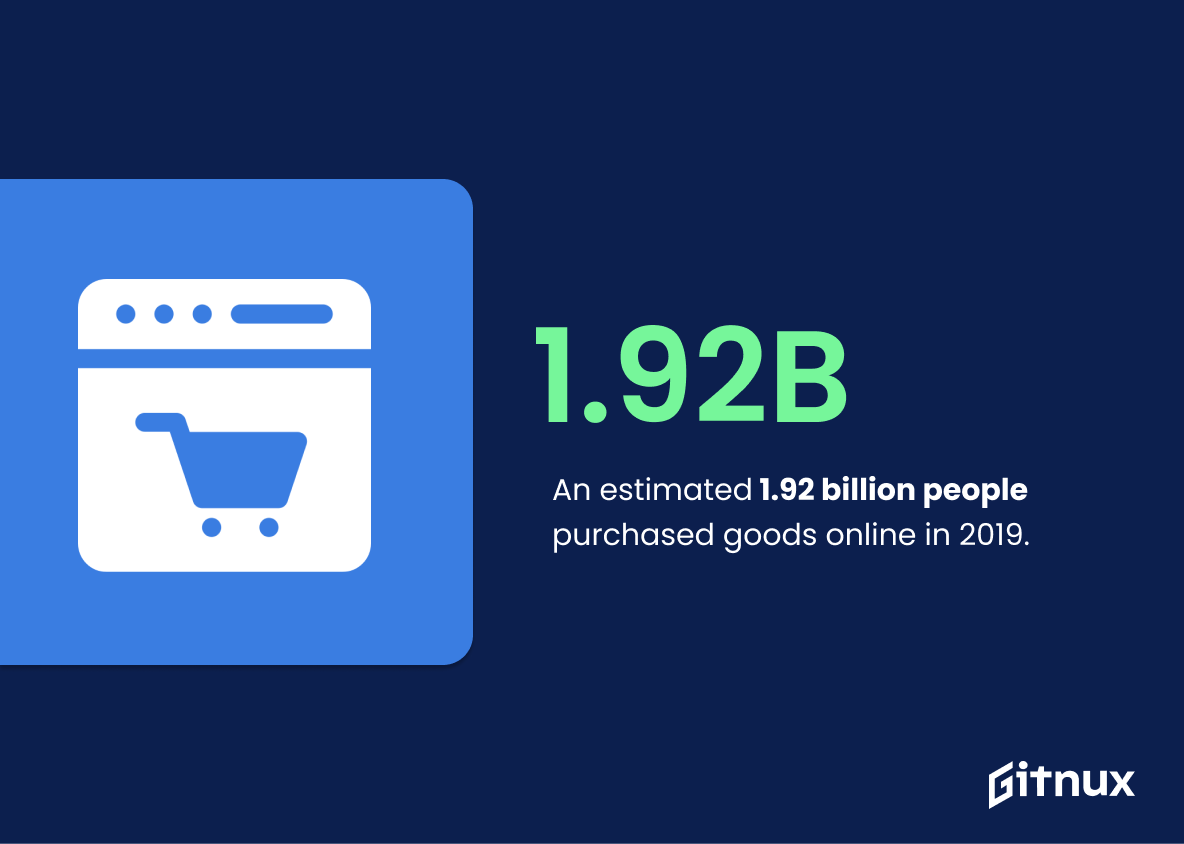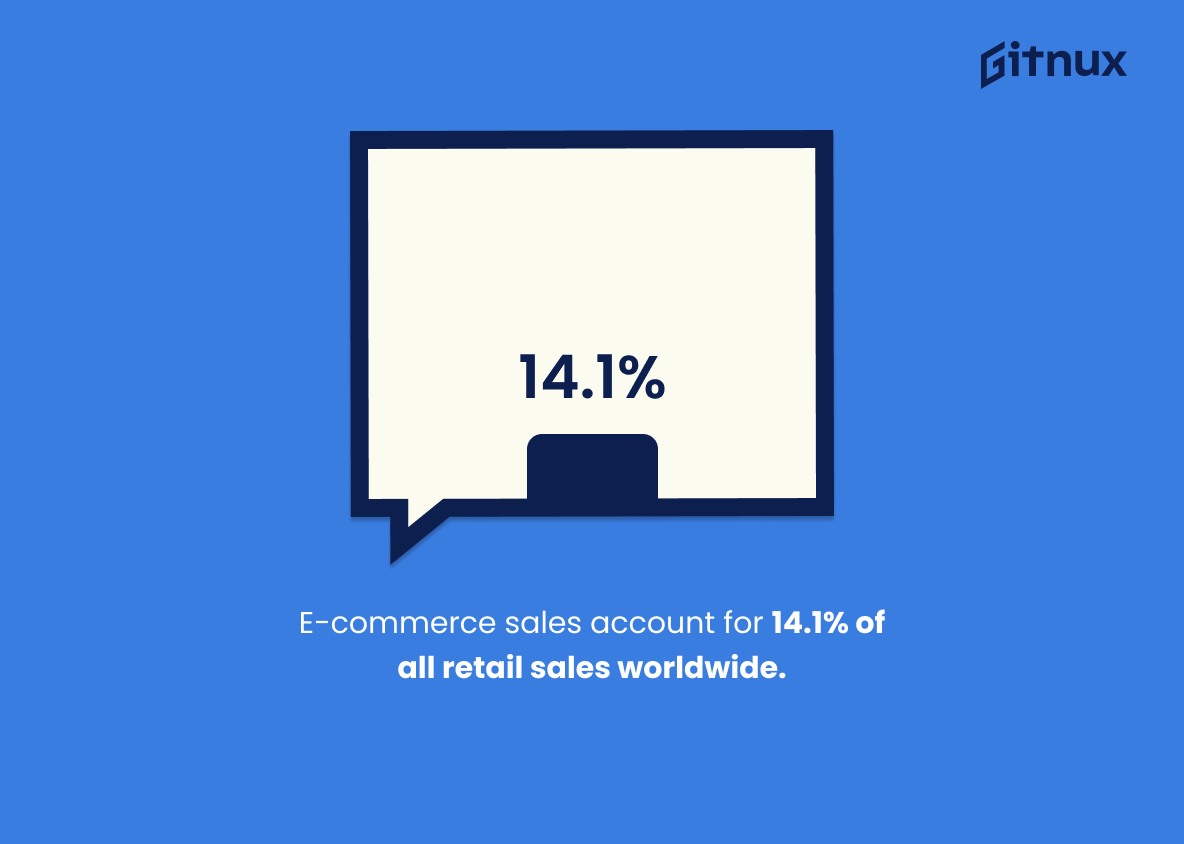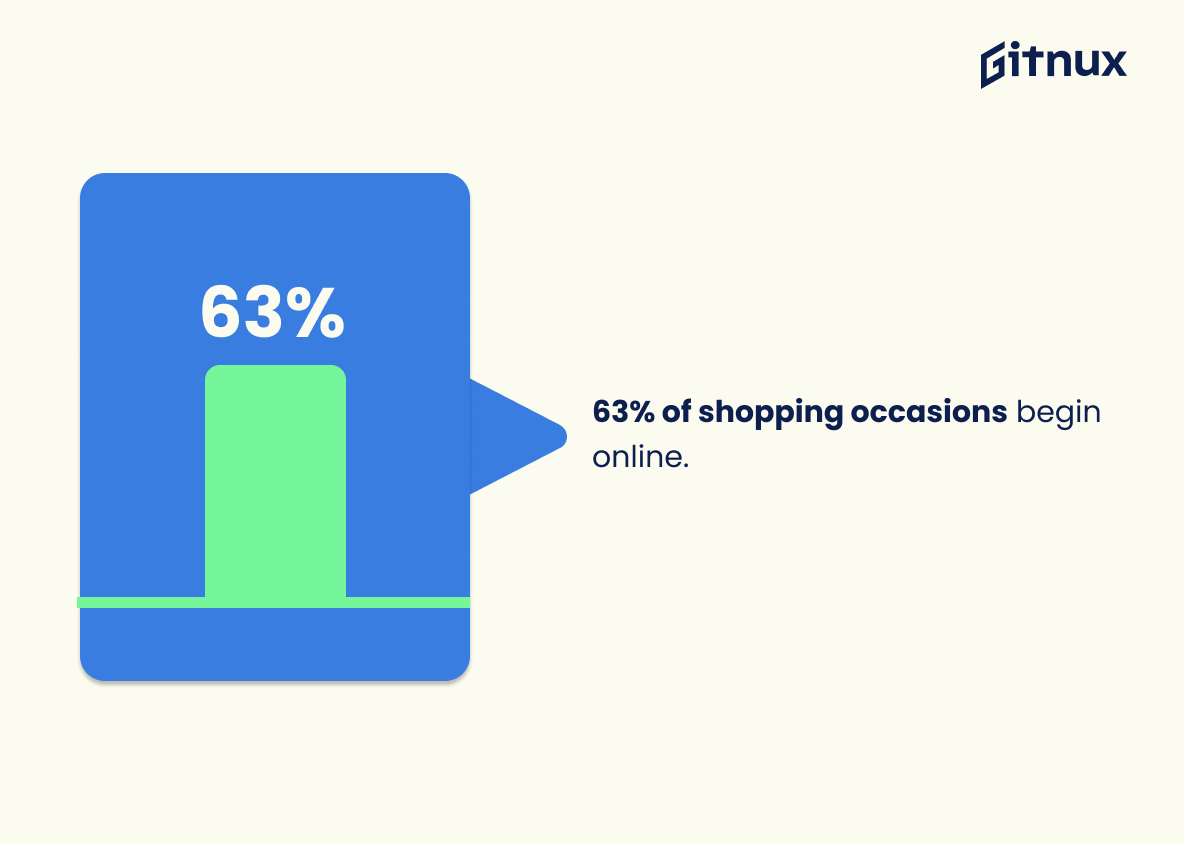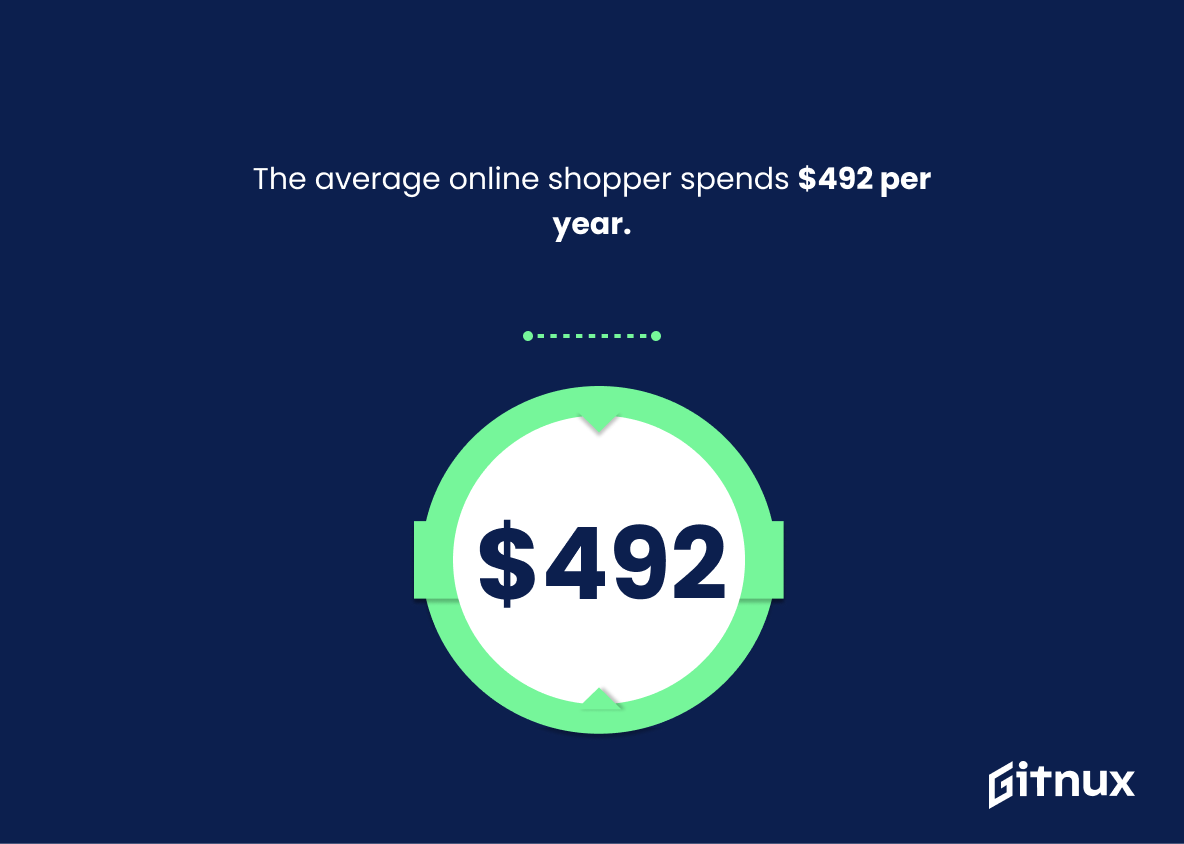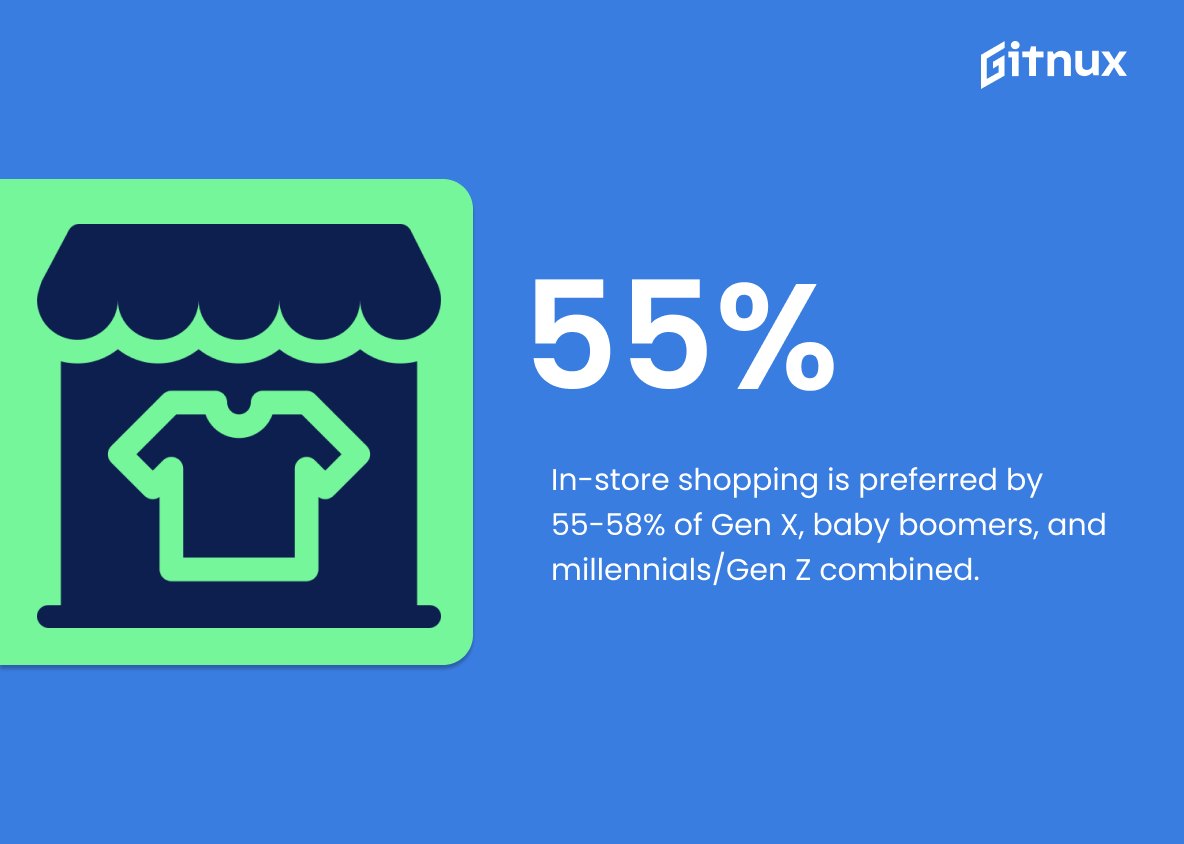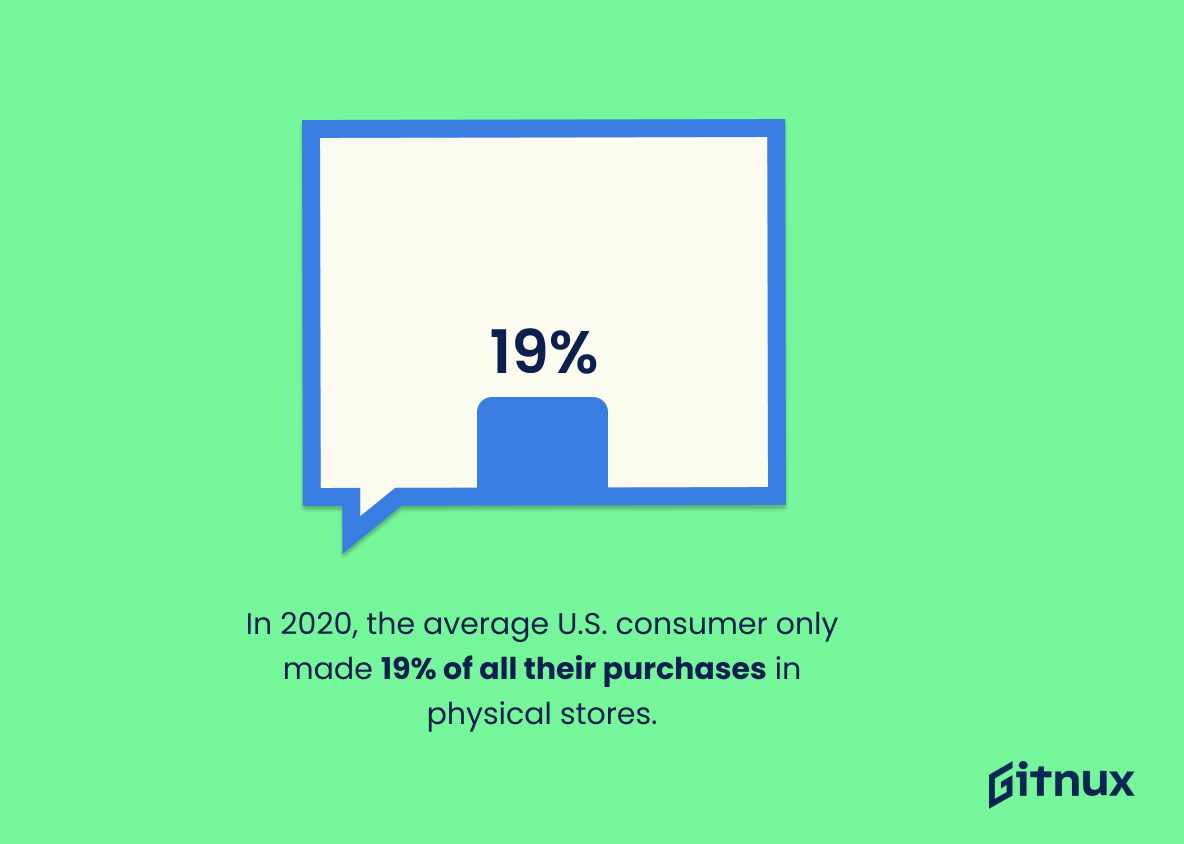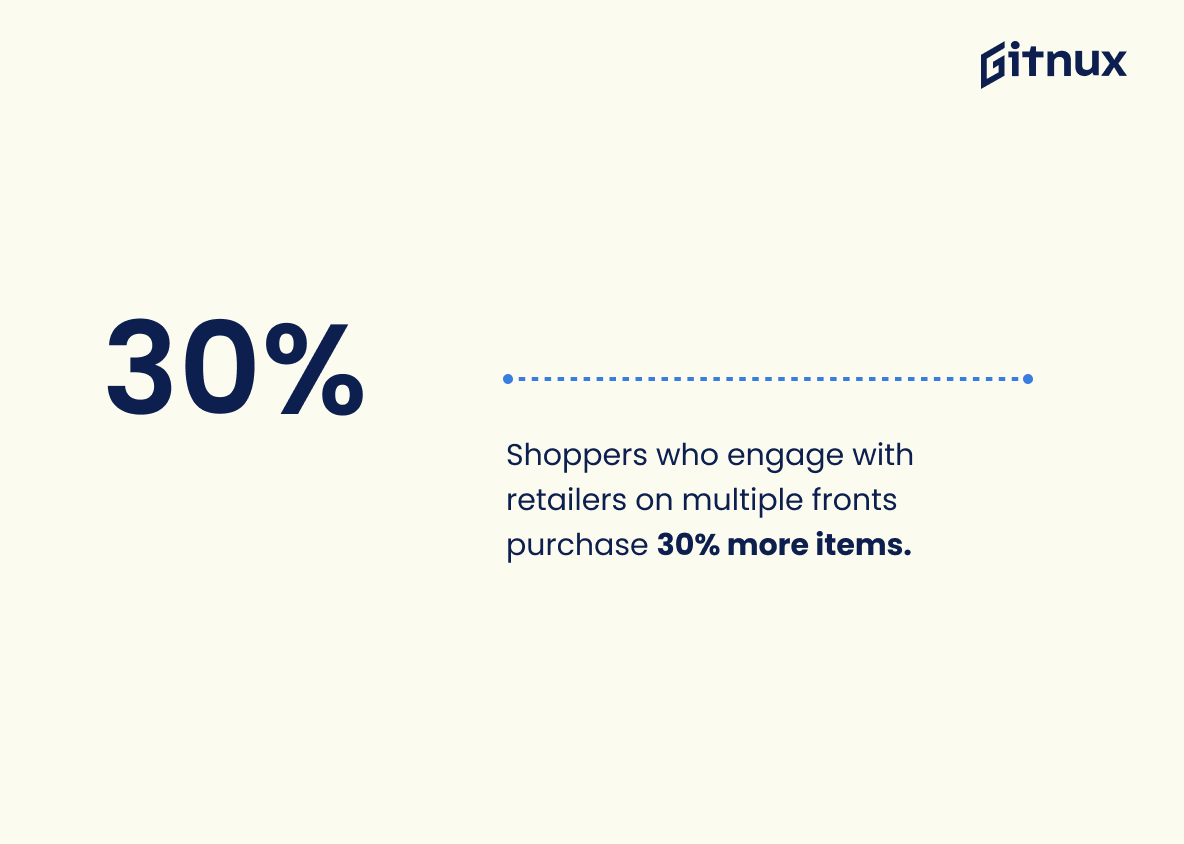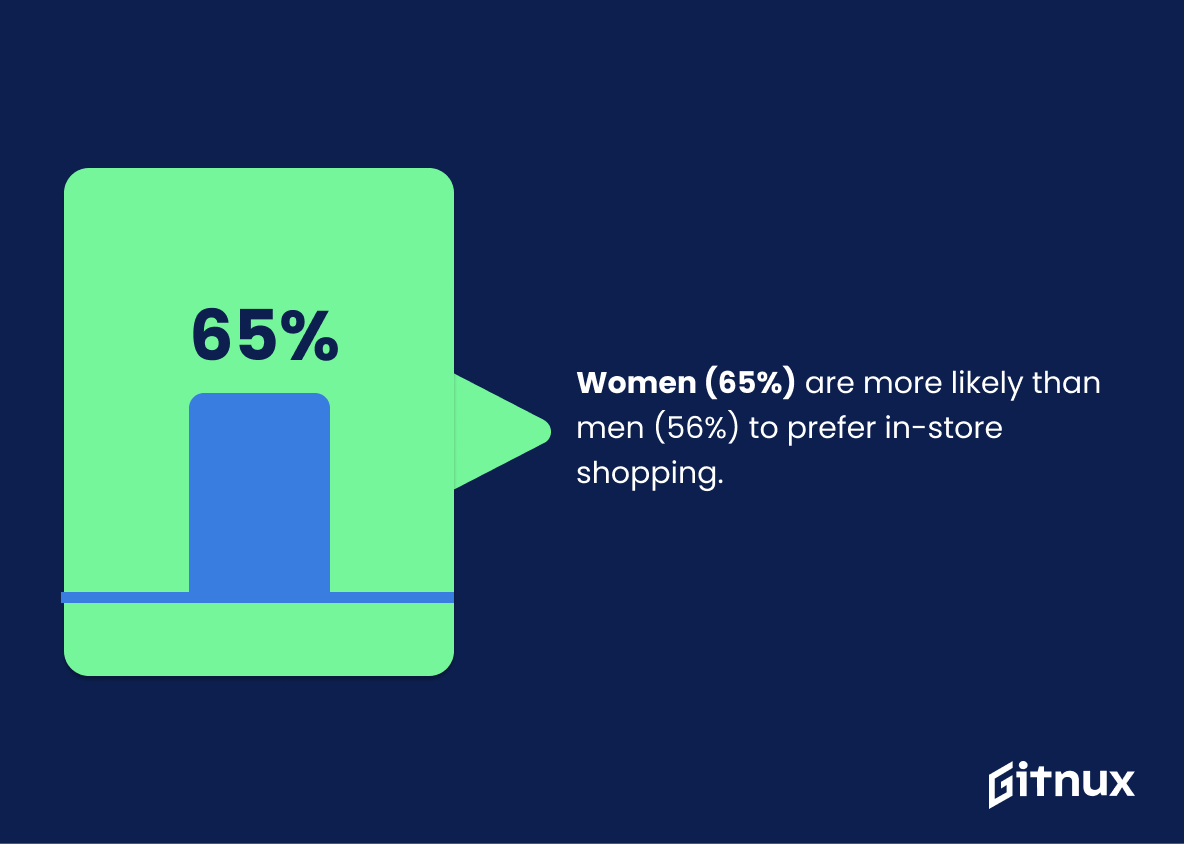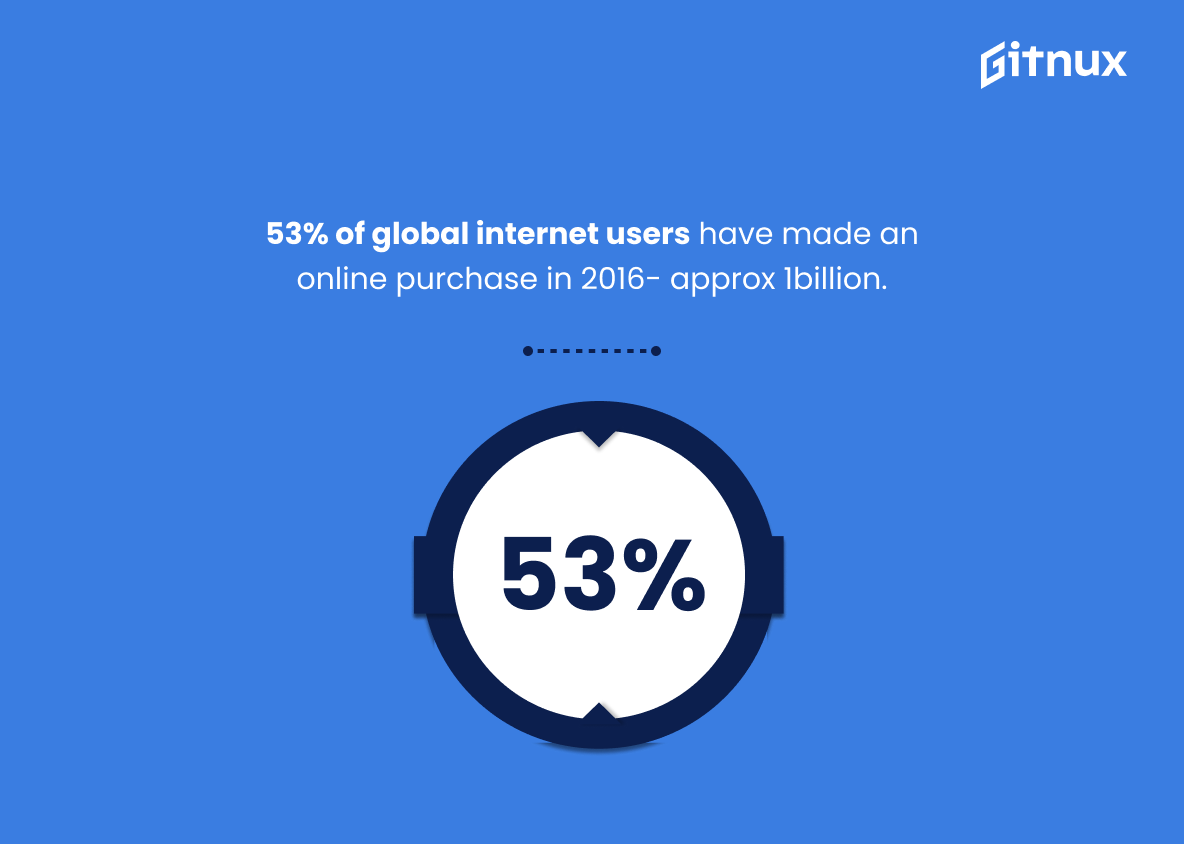In the digital age, the domain of shopping has drastically evolved, polarizing consumers into two camps: those who prefer the classic happenstance and tactile experience of in-store shopping, and those who have joyously embraced the convenience of online eCommerce. These contrasting trends have led to intriguing shopping online vs in-store statistics that illuminate our changing consumer habits. As economies globally oscillate between digital and physical retail, understanding these shifting dynamics is key to grasping the future of consumerism.
Delve into this blog post as we dissect the characteristic differences, marked advantages, and notable statistics of both online and in-store shopping experiences. We aim to shed light on how these two formats are not merely competing but rather complementing each other, shaping a new-generation hybrid model of retail.
The Latest Shopping Online Vs In-Store Statistics Unveiled
An estimated 1.92 billion people purchased goods online in 2019.
Diving into the staggering figure of 1.92 billion individuals who opted for online shopping in 2019, it becomes clear that this is more than just a passing trend. It’s a signpost marking the incredible transformation of the retail landscape.
In a blog post comparing online to in-store shopping, such data is incredibly significant. It showcases the sheer volume of people around the globe who are placing their loyalty and trust in the hands of e-commerce platforms. It serves as a loud and clear testament to the global preferences shifting towards online shopping, a trend which traditional brick and mortar establishments cannot afford to ignore. These numbers speak of consumer comfort in navigating digital platforms, trust in online transactions, and the convenience of shopping from anywhere at any time.
Imprinted in this number is a compelling narrative of changing habits, technological ease, and the evolving demands of the modern, connected consumer. It’s a spotlight illuminating the future trajectory of retail – a future that is increasingly becoming digital.
E-commerce sales account for 14.1% of all retail sales worldwide.
Delving into the captivating world of e-commerce, one cannot help but reflect on a profound statement – ‘E-commerce sales account for 14.1% of retail sales globally.’ This is not mere data, but a revealing compass pointing towards the shifting shopping trend that has been quietly brewing over recent years. When drafting a discourse about online versus in-store shopping, this statement anchors an invigorated understanding of the increasing appeal and trust in e-commerce.
Stand at the crossroads of traditional and digital shopping with this statistic in mind, and behold the sweeping change. A seemingly small figure, 14.1% in the grand spectrum of global retail sales, actually unveils a substantial rise in the inclination towards e-commerce platforms. Ingrained in this figure is evidence of consumers’ growing comfort with online purchases, their acceptance of technology-led convenience, and the successful attempted break in the ‘touch-and-feel’ barrier of traditional physical shopping.
Equipped with this statistic, we not only discern a steady rise in e-commerce, but also foresee impending eventualities. On this vibrant canvas of shopping trends, this fact adds perspective, challenging norms whilst adding weight to an all-embracing comprehension of the teetering balance between online and in-store shopping.
In 2019, 64% of U.S. consumers preferred making purchases in-store, compared to 36% who preferred shopping online.
Unveiling a dynamic shift in consumer behavior, this piece of information carries immense weight in the discourse of shopping preferences. The statistic broadcasts a significant predilection for brick-and-mortar stores among 64% of U.S. consumers in 2019 as opposed to the 36% in favor of online shopping. In the compass of an article concerning online versus in-store shopping statistics, these figures provide an intriguing window into the ongoing tug-of-war between physical stores and the digital marketplace.
Crucially, these numerical indices unravel the surprising vitality of traditional shopping methods in an era distinguished by digital proliferation. Therefore, to anyone studying or interested in consumer trends, these figures serve as a crucial touchstone about how traditions compel the majority and tech conveniences entice the rest-a factor that could inform marketing strategies or the future direction of retail industry.
Moreover, these numbers showcase a diffraction in the perception that e-commerce would swiftly swamp the in-store experience, thus reminding stakeholders not to entirely discount physical commercial spaces just yet. Hence, such data is not just a simple statistic; it is a roadmap that enlightens the reader about the contemporary retail landscape and its many contradictions, in the context of online versus in-store shopping.
63% of shopping occasions begin online.
Illuminating the increasingly digital landscape of commerce, the revelation that 63% of shopping occasions begin online serves as a beacon for understanding present-day consumer behavior. Within the echelons of a comparison between shopping online vs in-store, this piece of data brightly highlights the growing influence of e-commerce, indicating a significant shift in initial customer engagement from physical stores to the virtual arena.
Weaving this statistic into the narrative of the blog post reinforces the imperative for businesses to optimize their online presence. It presses upon the notion that, in the battle of online and in-store shopping, the former is rapidly emerging as the preferred reconnaissance ground for consumers – pinpointing and comparing products painstakingly before committing to a purchase. Therefore, this statistic underlines the potential virtual shopping holds, pushing businesses to acknowledge and harness its power.
The average online shopper spends $492 per year.
Venturing into the realm of online versus in-store shopping, one cannot ignore the insightful revelation that the typical web-based shopper allocates approximately $492 annually for their online purchases. This numerical insight helps paint a vivid picture of contemporary buying behaviors, exposing the hefty monetary commitment individuals demonstrate towards e-commerce.
In the heated debate of online shopping versus traditional in-store purchases, this figure carves its importance. It gives a glimpse into the financial dynamics of the digital marketplace, serving as a yardstick to measure its economic relevance. By unintentionally casting a monetary vote, consumers drive the market narrative, and in this case, lend credence to the significant role of ecommerce in today’s retail ecosystem.
In the grand chessboard of retail strategies, this information serves as an essential piece, guiding businesses on where to invest their resources and strategize their moves. For consumers, it sheds light on shopping trends, potentially influencing their buying decisions. Thus, the ‘simple’ statistic of $492 per year morphs into a critical factor that helps decode the online versus in-store shopping saga.
In-store shopping remains more appealing to older consumers, with 61% of Generation Z and millennials, 55% of Generation X, and 58% of baby boomers preferring this approach.
In the cybersphere of online versus in-store shopping, these statistics serve as a critical roadmap to understanding consumer behavior. They emphatically contradict the frequently held assumption that digital is always king, specifically among younger generations.
However, penetrating deeper into the fabric of those statistics, we find that 61% of Generation Z and millennials, renowned as the ‘digital natives’ fiercely uphold the torch for in-store shopping. Additionally, Generation X and baby boomers, around 55% and 58% respectively, also lean towards this traditional retail method.
The numbers thus provide a beacon of hope for brick-and-mortar stores, underscoring that the in-store experience carries weight, even in the age of fingertip shopping. They signify an untapped potential for businesses, demanding a broader perspective on consumer trends rather than merely focusing on digital peddling. As such, businesses that strive to strike a balance between in-store and online shopping could unlock a treasure trove of possibilities.
In 2020, the average U.S. consumer only made 19% of all their purchases in physical stores.
Highlighting this substantial statistic illuminates a seismic shift in consumer behavior, underscoring the accelerated transition from in-store shopping to online commerce in 2020. As a propensity for online transactions swells, this figure provides a clear snapshot of the present retail landscape, fortifying the narrative of an online shopping boom within the blog post.
In a nutshell, it underscores the growing importance and dominance of online shopping platforms in the consumer market, resonating with readers wanting to understand these shopping trends.
Shoppers who engage with retailers on multiple fronts purchase 30% more items.
Unveiling the layers of this statistic can shed significant light on the depth of modern shopping habits, particularly when comparing in-store to online shopping. This 30% increase in purchases among shoppers engaging with retailers across platforms underscores the inherent power of an omnichannel approach.
Integrated shopping experiences often lead to greater consumer engagement and accordingly, drive higher sales. So, if your blog post is painting a picture of the landscapes of both online and in-store shopping, this stat becomes a vibrant splash of color, illustrating the rise of the omnichannel consumer and ultimately, recalibrating the scales of shopping preferences just a little further towards the online shopping side.
Women (65%) are more likely than men (56%) to prefer in-store shopping.
In the pulsating narrative of online versus in-store shopping, every piece of statistics holds its ground, painting a vibrant picture of market dynamics. Discussing the statistic that asserts ‘65% of women are inclined towards in-store shopping as compared to 56% of men’, we navigate through the labyrinth of consumer behavior. A footnote in this saga comes alive, highlighting the gender-specific predilections towards different shopping experiences.
The dichotomy reinforces the necessity of brick-and-mortar stores, especially in attracting female consumers who may view shopping as a sensory and social experience, not just a transaction. For marketers and retailers, it is a roadmap guiding them to tailor their strategies accordingly, ensuring both online interfaces and physical stores cater effectively to their audience’s purchasing practices.
This subtle dance between demographics and shopping preferences brings the blog post’s conversation into sharper focus. It indicates how, despite the exponential growth of online shopping, brick-and-mortar stores remain a pivotal part of the shopping landscape.
53% of global internet users have made an online purchase in 2016- approx 1billion.
Illuminating the scale of e-commerce penetration, it’s captivating to note how over half (53%) of global internet users have shifted their purchasing habits online in 2016. That’s not just a mere percentage, but translates to about a staggering one billion people choosing digital screens over in-store aisles. This dramatic swing in consumer behavior underscores the escalating importance of crafting a remarkable online shopping experience.
It spotlights the seismic shift from traditional brick-and-mortar stores to virtual storefronts, becoming a powerful testament to the burgeoning influence of e-commerce trends in the throbbing heart of global retail. Bear in mind, a blog post diving into the comparison of online versus in-store shopping wouldn’t be comprehensive without acknowledging the sheer volume of shoppers now browsing and buying in the digital marketplace.
59% of Millennials and 30% of boomers would rather order food online than dine in a restaurant.
Delving into the realm of dining preferences illuminates a broader trend which is pivotal in the sphere of online shopping versus in-store statistics. This statistic – illustrating that 59% of Millennials and 30% of Boomers lean more towards online food ordering rather than a conventional dine-in experience – serves as a proxy, revealing a cross-generational shift toward digital interactions and e-commerce.
Not confined merely to the realm of fashion or groceries, it underscores the imminent pervasiveness of online transactions in our daily routines and consumption patterns. The noteworthy disparity between Millennials and Boomers also points to emerging market segments with distinct preferences which are invaluable guideposts for businesses strategizing their digital transformation journeys.
42% of U.S. consumers shop online for a greater variety of products and brands.
Delving into the identity of the modern consumer, one cannot dismiss the colorful tapestry woven by the statistic- ‘42% of U.S. consumers shop online for a greater variety of products and brands.’ This statistic serves as a mirror reflecting the current consumer mindset, where variety and choice are paramount. The narrative of ‘Shopping Online Vs In-Store Statistics’ becomes multi-layered with the inclusion of this fact, demonstrating how online shopping is winning hearts with its rich palette of options.
In this competitive arena, this statistic acts as a wake-up call for brick-and-mortar stores, spurring them to embrace and mimic the diversity offered online. Furthermore, it’s an enlightenment to businesses anchoring themselves on the online landscape, exemplifying the importance of a broad spectrum of choices to stay relevant.
Therefore, this statistic both augments the essence of the discussion within our blog post and drives the narrative forward in an evolving market, hallmarked by its celebration of choice and variety.
Almost half of American consumers (49%) say that shipping costs deter them from shopping online.
Shining a spotlight on the statistic – ‘Almost half of American consumers (49%) say that shipping costs deter them from shopping online’ – uncovers one of the most prevalent barriers in the e-commerce landscape. This figure isn’t just a number, it’s a testament to the tug of war between online stores and physical retail outlets, each vying for consumer dollars.
In a blog post comparing online and in-store shopping, this piece of data carries weight as it emphasizes the fact that there’s still a substantial segment of consumers who are held back from fully embracing online shopping due to additional costs linked with shipping. It underlines the imperative for online retailers to potentially re-evaluate their shipping strategies in an attempt to sway this demographic. Ultimately, the statistic serves as a valuable tool which underscores the ongoing demand for in-store shopping experiences while also challenging e-commerce platforms to step up their game in overcoming such deterrents.
A reported 71% of shoppers believe they will get a better deal online than in stores.
Unveiling this gripping data uncovers profound insights into modern consumer behavior and perception of online shopping. Taking center stage, the impressive 71% figure succinctly illuminates the prevailing sentiment that online platforms are the go-to spots for bargain hunters. As we mine deeper into the digits, it is clear this revelation is pivotal in shaping our understanding of the dynamic trade-off between online and in-store shopping.
It explicitly underpins the narrative of the blog post, offering concrete numerical evidence that strengthens the exploration of shopping trends and strategies. Thus, this data piece becomes the lifeblood of the ongoing online versus in-store debate, providing a valuable pulse check on the current state of shopper beliefs and practices.
Conclusion
Exploring both online shopping and in-store shopping statistics gives us a fascinating incite into modern consumer behavior. Online shopping continues to surge, offering convenience, variety, and easy price comparisons. However, the in-store experience remains popular for the tactile shopping experience, immediate gratification, and personal service. Despite the growth of e-commerce, it’s clear that physical stores are far from becoming obsolete and still have a valuable role to play within the retail space.
For businesses, a blended approach that seamlessly integrates both online and in-store elements, also known as omnichannel retailing, is likely to appeal to a broader spectrum of consumers and generate the best results in today’s dynamic and ever-evolving marketplace. As consumer preferences continue to evolve, so must retailers in order to stay competitive, profitable, and relevant.
References
0. – https://www.www.statista.com
1. – https://www.www.monetate.com
2. – https://www.www.bigcommerce.com
3. – https://www.www.shopify.com
4. – https://www.firstinsight.com
5. – https://www.www.thinkwithgoogle.com
